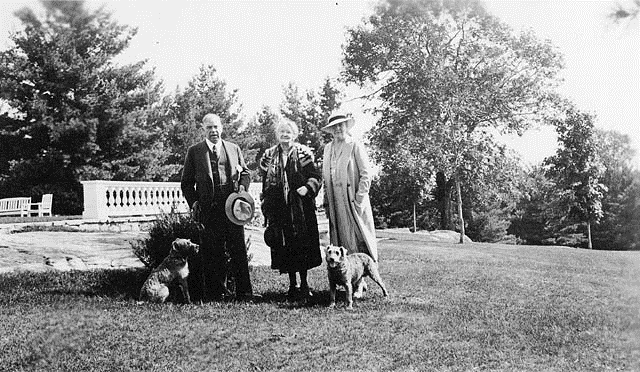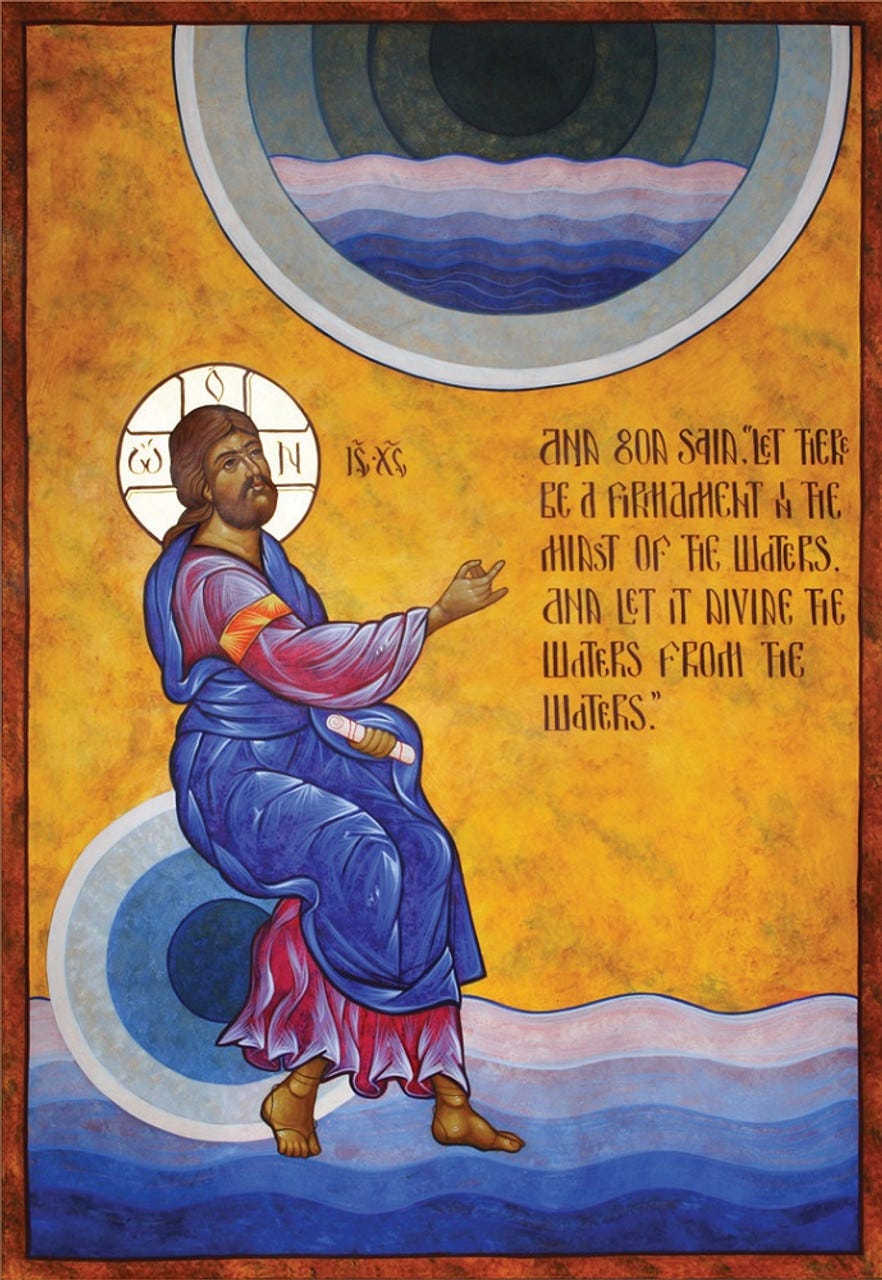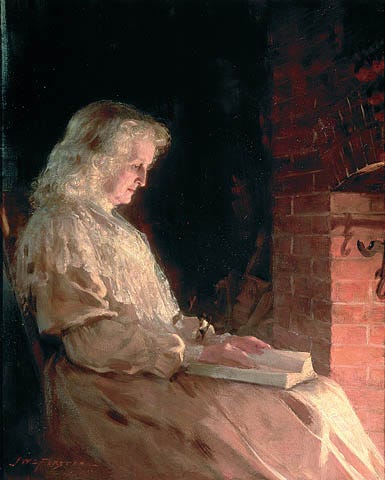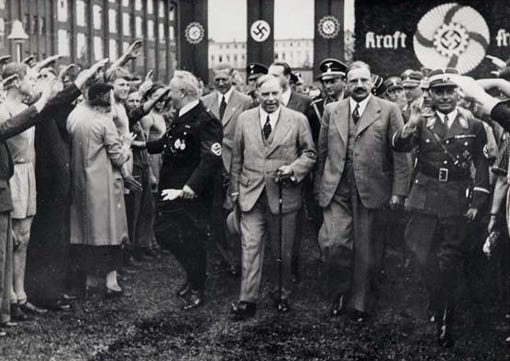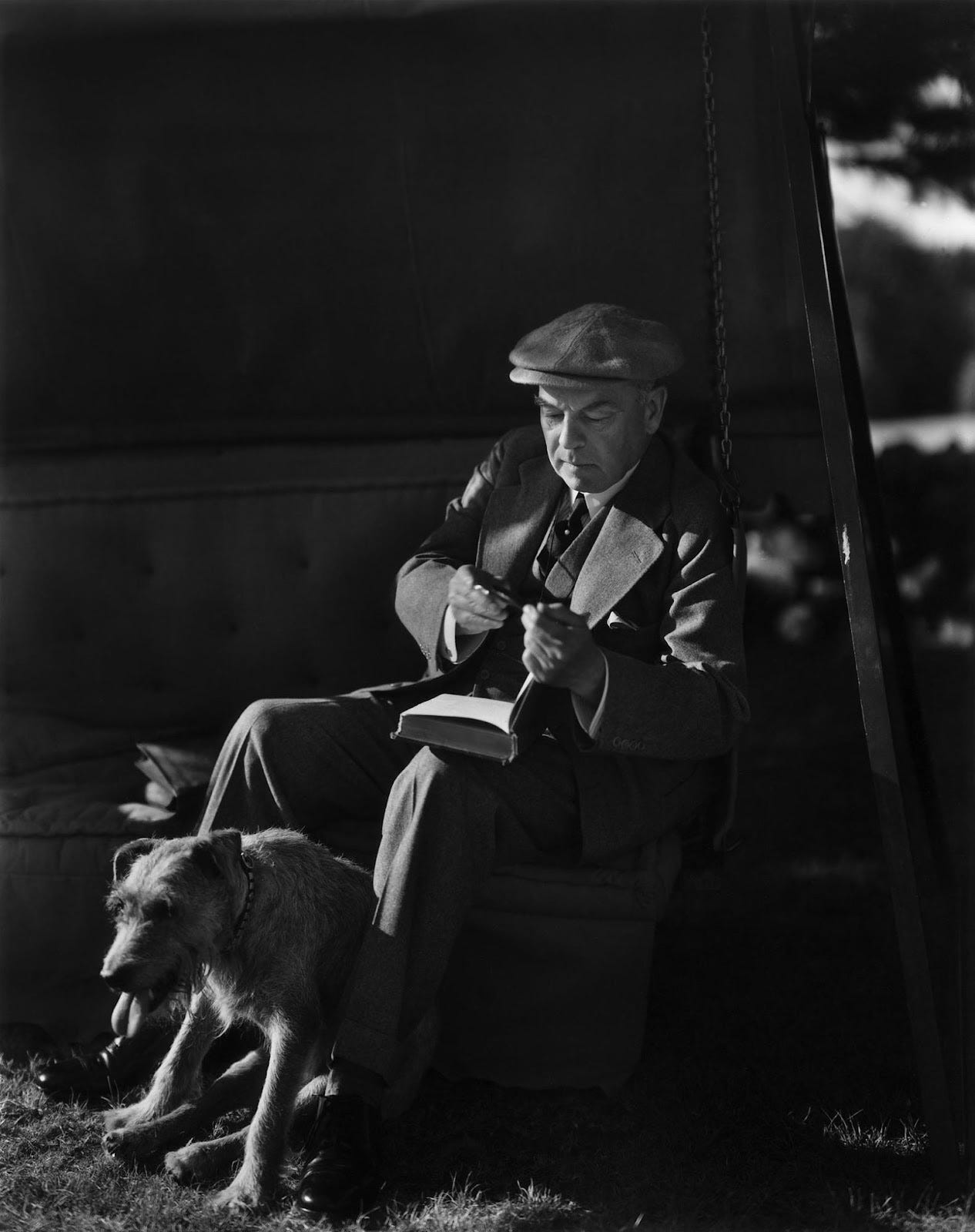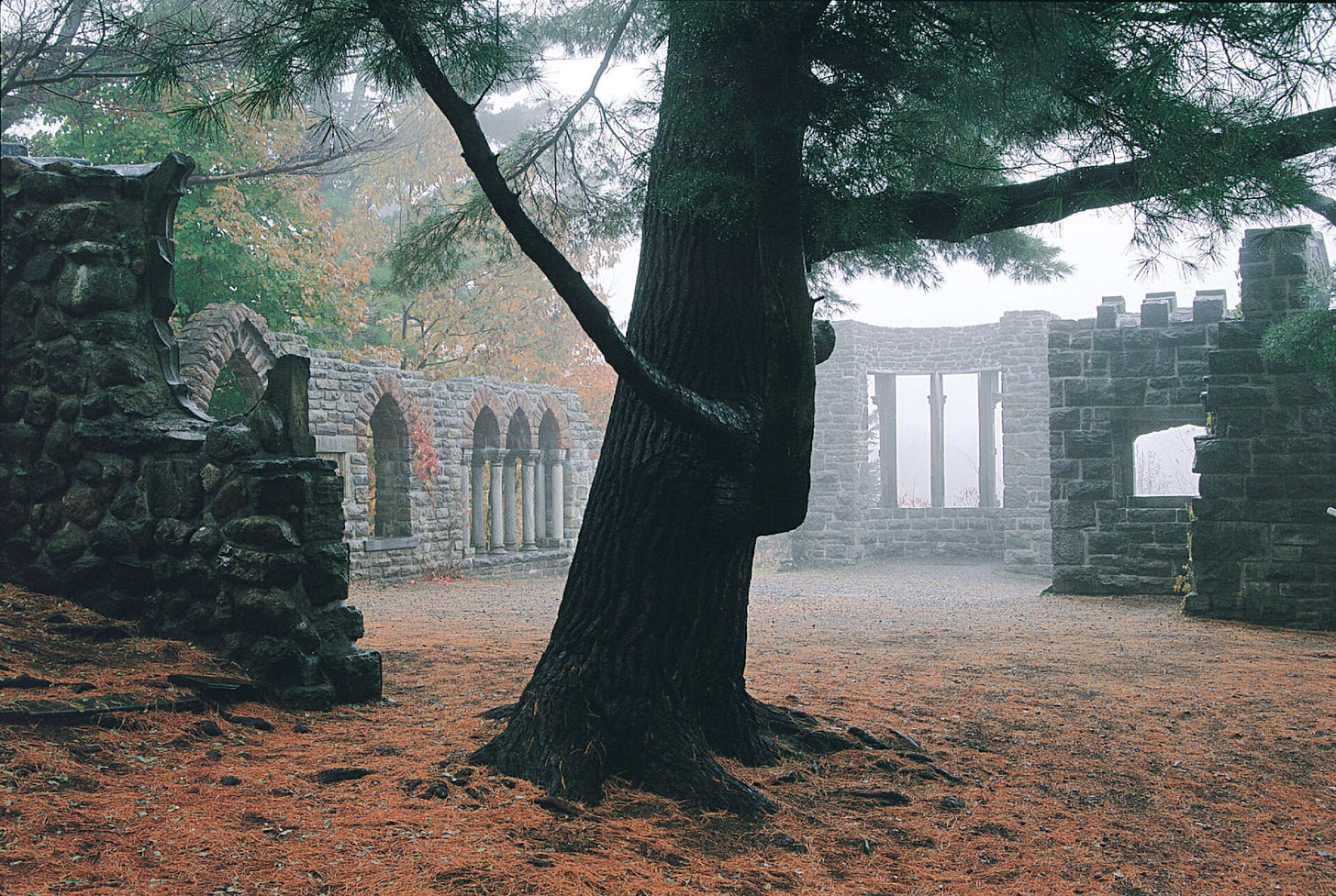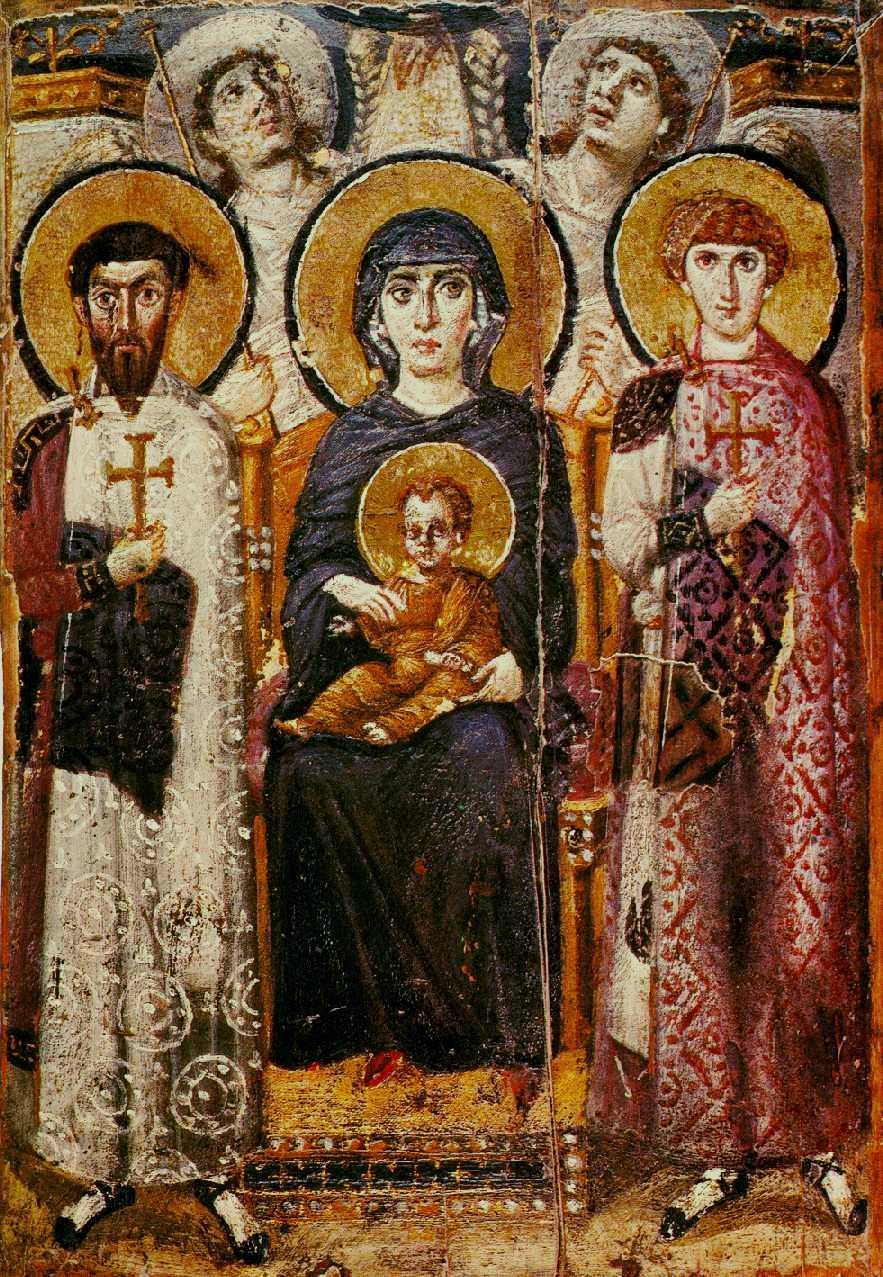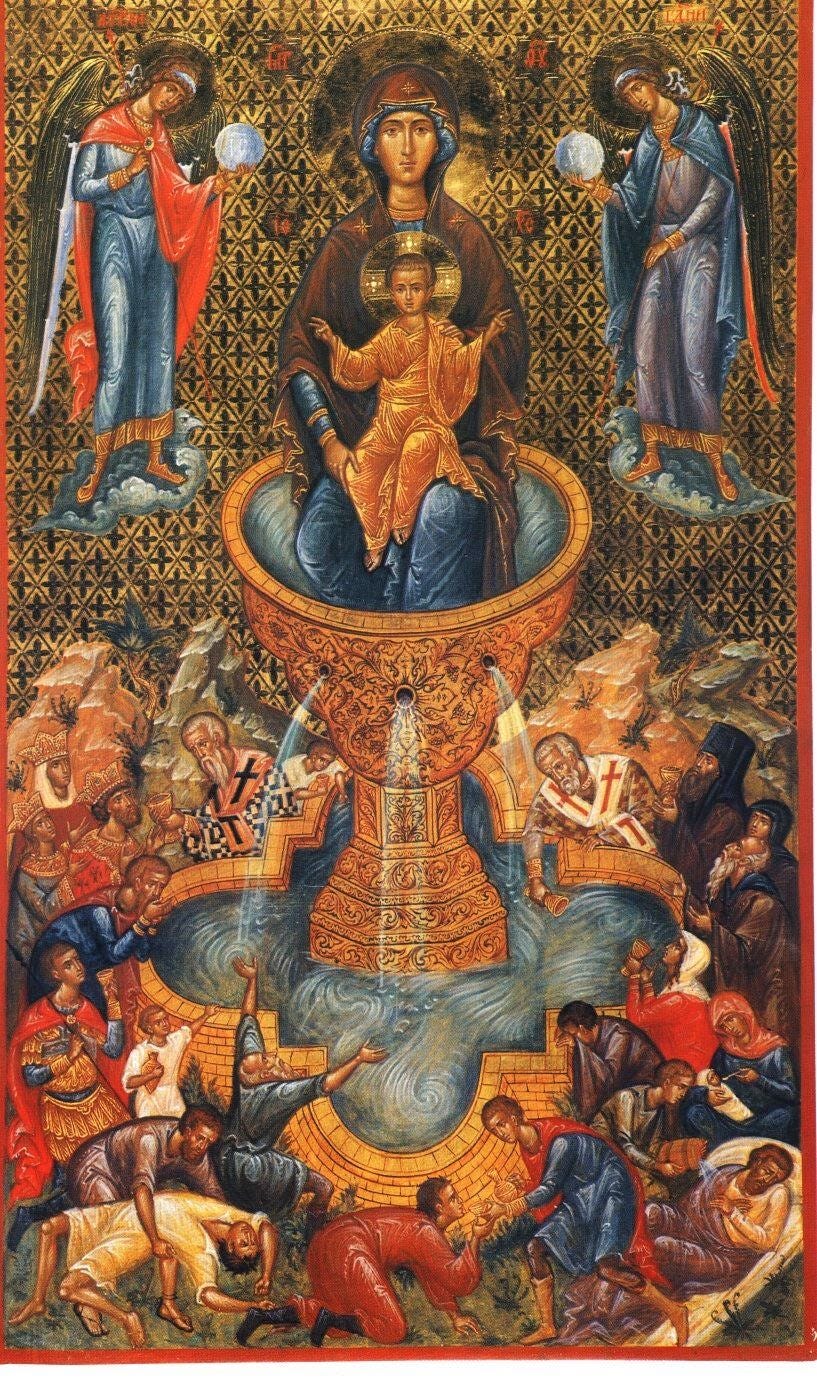Between This World and The Next
Mackenzie King and Divination
The following is a condensed chapter from an upcoming book by Mitch Sherven, on Canadian history and religious symbolism. Check out Mitch’s published work here, which includes the chapters Louis Riel’s Symbolic World and The Norse in the New World.
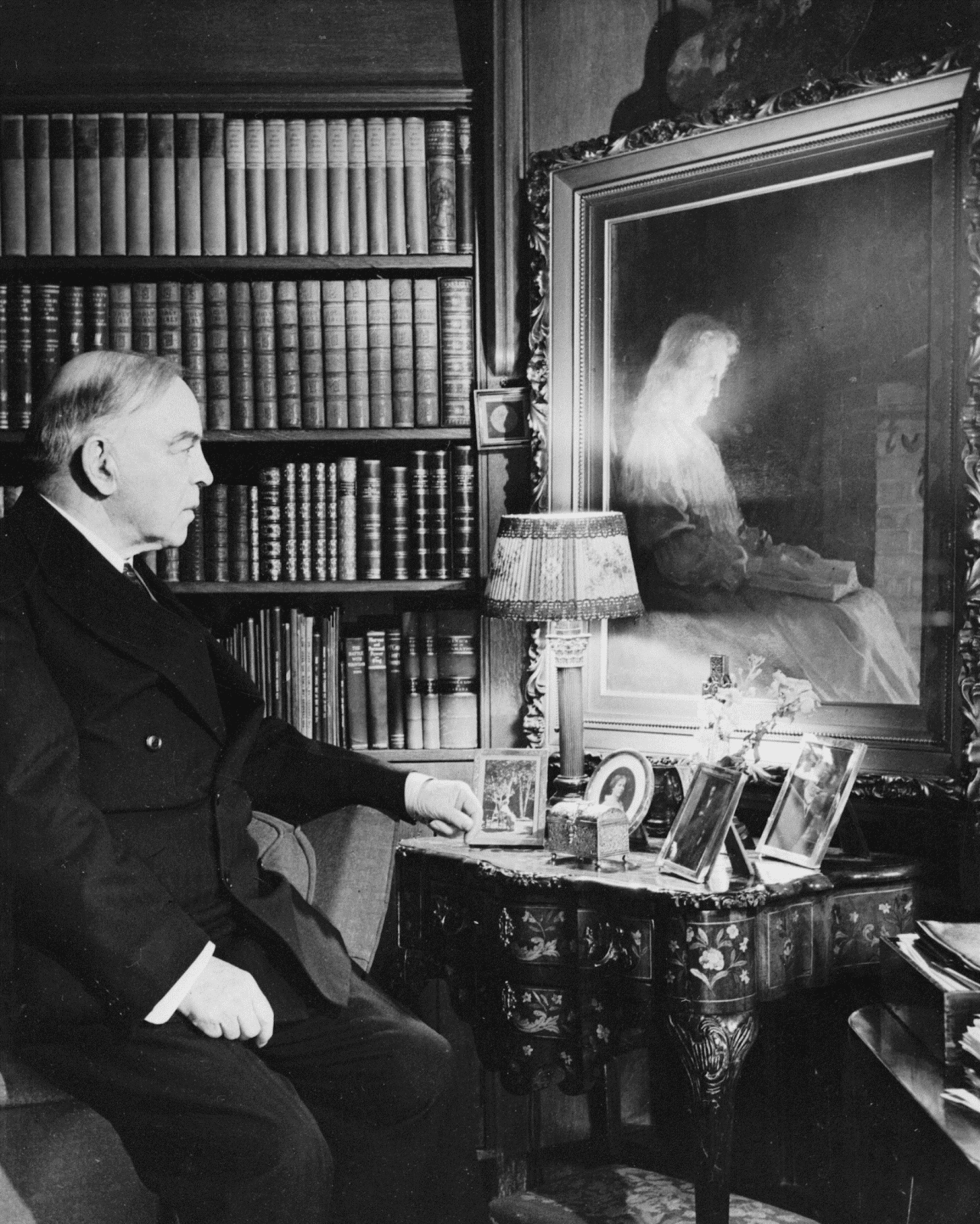
William Lyon Mackenzie King presided over Canada for much of the early twentieth century. King is still the longest serving Prime Minister in Canadian history. He was in office across three decades, from 1921-1930 and 1935-1948. In many ways, King was not the kind of dynamic leader his time seemed to call for.
King’s demeanour was congenial and unassuming. He is still the only Prime Minister to have earned a PhD. An opponent of King could be forgiven for not initially realizing one was dealing with a ruthless and ambitious political operator, who always found a way to survive.
King was not as a particularly likeable or inspiring figure to the average voter, but he became a symbol of stability and normalcy—a dependable and comfortable choice on whom one could always rely. Historian Pierre Berton credits King for establishing an enduring twentieth century stereotype of the polite, well-mannered, and ‘nice’ Canadian.1 Today, many remember King as Canada’s leader during the Second World War, and the guy on our $50 bill.
Upon King’s death in 1950, biographers and historians had a wealth of material to tell his story. King kept a daily diary starting in 1893, until three days before his death. King stated in his will, that the diary could be used for an official biography, then it was to be destroyed. His wishes were not followed.
It was not until 1976 that much of King’s private life would be fully brought to light, in historian Charles Perry Stacey’s book A Very Double Life: The Private World of Mackenzie King. There were rumours about King’s private life while he was in office and after his death. Stacey confirmed many of these. Stacey told a story of a stable and dependable leader, who spent his time between the worlds of politics and divination.
King frequently participated in spiritualist practices. Everything from Ouija boards, reading tea leaves, dream analysis, fortune telling, belief in mystical numbers, and participating in séances with the dead—in which he believed he could communicate with those in the afterlife.
King became enamoured with spiritualism rather late in life. He developed a particular fascination with returning to commune with the dead, in what he called ‘The Great Beyond’. King was convinced he could establish contact with his departed family members and prominent figures of the past; first through the assistance of mediums, and later on his own.
King suffered a number of losses in his life, including many when he was a young man. One gets the impression in reading his diary, and looking at his attempts to make contact with the dead, that he never truly came to terms with the passing of those closest to him. But King also attempted to use these losses for strength. King came to believe that he could master political life because he had the support and comfort of those who he loved and admired—always by his side in spirit.
Even with all his eccentricities, King was certainly aware of the taboos of divination. King was an avid student of the Bible, and a faithful Presbyterian who dutifully attended church all his life. But he ultimately accepted no real authority on matters of religion outside his own. King’s believed his private connection with God did not have to be mediated through a particular denomination or set of practices.
Before he delved into séances, King looked for answers in his dreams. Dreams are both the place where the passions play out into nonsensical chaos, and where genuine insight and truth can be revealed. Writer Matthieu Pageau notes the symbolic ambiguity of dreams, “typical dreams are not just a series of random images and feelings; they are a confused narrative of death and resurrection.”2 In the midst of this confusion, most people lack the level of discernment necessary to glean worthwhile meaning.
King certainly thought himself up to the task of finding meaning through his dreams. He took the view that his dreams were sources of prophetic knowledge:
I have come to the conclusion – the impression is being borne upon me, that visions or dreams have 3 contents – what was – what is – what is to be. – three qualities of God head – God who was – is & is to be. They have this significance. Such certainly is the soul, and a vision is an expression of it – what we go through in the flesh – we continue to “go thro” in the mind - ill suited to higher perfection we become as it were part of God – pure spirit – This is a period of probation and experiment…3
King also looked to Scripture for passages which were related to and validated his mystical experiences. King developed a habit of opening the Bible at random and looking for personal messages.4
King was acquainted with spiritualism as early as 1925, when he had already been Prime Minister for four years. While preparing for an election, he recorded an encounter with Sir Donald Mann, a wealthy entrepreneur and railroad contractor. Mann had a message for King. It was from King’s old mentor Sir Wilfrid Laurier, the former Prime Minister, who had been dead since 1919:
At the office I had a remarkable talk with Sir Donald Mann… [he] got onto spiritualism & said he had been talking with Sir Wilfrid who gave him a message for me, to go to country last week in Oct, not later, that I wd. carry the country, including provinces of Ont. & Quebec, wd. lose in Maritime provinces, especially N.S. which wd. be hopeless… about marriage – Will be married shortly after [election] as man in my position [should] be – also to look after press & foreign press in particular – All this is quite extraordinary… It is strange to see Mann the spiritualist he is. I am far however from making light of his convictions or views… there is something in it.5
King and the Liberals lost the 1925 election. Some of his first indirect communications with The Great Beyond were not infallible.
King and his Liberals lost another election during the Great Depression. He was Leader of the Opposition from 1930-35. Without the pressures of being the Prime Minister, King delved deeper into spiritualism. During this time he frequently used mediums, through which he believed he could talk to the deceased.
In 1933, King began experimenting with a “little table” which would allow him and a select few, usually his close friend Joan Patteson, private and direct communication with the dead—without the use of a medium. Charles Perry Stacey details what he understood as King’s process with the little table:
He seems to have left no description of their technique. But they evidently followed, in the beginning at least, the procedures familiar in spiritualistic literature. They placed their hands on the table and questioned the spirits, and the spirits replied by “responsive raps”. Two raps mean Yes (we know this much from a note by King) and one presumably No. Where detail was required the table “spelled out” the answer in code; the method usually accepted seems to have been that one rap meant A, two meant B, and so on through the alphabet… It is rather hard to imagine this sort of thing being laboriously spelled out letter by letter. Is it possible that King had turned himself into a medium and believed himself to be receiving, in his head, messages which he repeated aloud for the benefit of Joan Patteson and then wrote down?6
There is a certain naiveté and arrogant innocence in King’s petitions to the dead. He was largely preoccupied with obtaining comforting reassurances from his family, and concrete support about political decisions. Familiar figures like Prime Minister Laurier and King’s grandfather, William Lyon Mackenzie, frequently showed up to offer support.
King also believed he received messages from illustrious figures whom he had no connection to, but greatly admired, such as Prime Minister Alexander Mackenzie, President Ulysses S. Grant, King George V, Leonardo da Vinci, Louis Pasteur and others.7
Charles Perry Stacey believed that King’s practice of divination did not affect his decisions or conduct as Prime Minister. In Stacey’s words, “It was support, strength, not advice, that he asked for and received from the spirits. Mainly, he wanted approval, and by a strange coincidence that was what he usually got. The spirits did not, in general, tell him what to do; they told him that what he had done, or what he had decided to do, was right. Thus they sent him on his way with confidence renewed.”8
Regardless of one’s intentions, relying on this type of knowledge or wisdom often does not lead to a healthy renewal of oneself, and it can accelerate a cycle of uncertainty and instability. Matthieu Pageau notes the symbolic significance of “divination” in Scripture:
…a more primitive form of knowledge called “confusion” naturally emerges when no clear connection can be established between meaning and fact. Thus, when there is no reasonable agreement between heaven and earth, a more subtle medium (water) naturally fills the gap. This translucent medium is neither clear like heaven nor solid like the earth but lies ambiguously between meaning and fact. This type of mediation produces a vague and unstable reality that is highly susceptible to the vicissitudes of time.
In the Bible, obtaining knowledge from this hidden medium is called “divination”, a practice that is deeply connected to the flow of ‘time’ and its mysteries. This form of knowledge held an important place in the ancient world. It acted as a substitute for reason and certainty when this level of knowledge was unavailable.9
King’s divinatory practices were also related to his relationship with the feminine. Wisdom is symbolically represented as feminine in Scripture. The nature of the feminine, having lower and higher symbolic roles, is important here to understand why confusion and uncertainty reign in divination.
The dual symbolic nature of the feminine is present in Scripture from the outset. In the form of the waters under and above the firmament in Genesis:
6 And God said, Let there be a firmament in the midst of the waters, and let it divide the waters from the waters.7 And God made the firmament, and divided the waters which were under the firmament from the waters which were above the firmament: and it was so. (Genesis 1:6-7) [bold added]
Both the primordial chaos of the lower waters, and genuine revelation from God in the higher waters, are symbolically feminine, and both are beyond human understanding or fact. For these reasons, lower and higher forms of knowledge may appear to be similar to us. Messages derived through divination, dreams, and other alternative sources carry this similar confusion.
Most people lack the discernment necessary to interpret and analyze the differences between misleading and revelatory messages, or in other words, if the messages are coming from the lower or the higher waters. Some Fathers of the Church advise ignoring spiritual experiences, to avoid that problem. This includes visions or dreams, which are very difficult for most of us to reliably interpret.10
King’s early diary entries tell of his struggles with the lower and higher aspects of the feminine, as he tried to find fulfillment with women. King was a sensitive young man, and as a university student he lamented his relations with “lowly” women. He writes about nighttime “strolls”, of which he expresses guilt and regret:
It was very hard for me to stay in. I felt I must go out & stroll round. Alas I have much to conquer as yet. Oh I wish I could overcome sin in some of its more terrible forms. Tonight has proven to me that I am very weak but I will pray to be made stronger… [The next day] I cried after coming home tonight. I feel very sorry for something I did last night. What sort of man am I to become? is the question that is bothering me at present.11
In an early attempt at social reform, King even tried to convince multiple women to leave their timeless but lowly professions.12 During his university years, he recorded in his diary a cycle of desire and shame:
There is no doubt I live a very double life. I strive to do right and continually do wrong. Yet I do not do the right I do to make it a cloak for evil. The evil that I do is done unwillingly, it comes of the frailty of my nature, I am sorry for it… I fear I am much like Peter, I deny my Lord when the maid smiles at me, but with God’s help I will overcome even this temptation.13
King would remain a lifelong bachelor. His mother was the most important woman in his life, and her death did not change that. Other women in King’s life had difficulty living up to her standard. King praised his mother unceasingly, regardless of the stage of his life or other concerns. He writes in 1900:
She is, I think, the purest and sweetest soul that God ever made. She is all tenderness & love, all devotion, knows nothing of selfishness and thinks only of others. Her heart has explained to me the mystery of God’s creation and she lives in the light of His love. It’s like coming near an angel to be with her, and where she has been there is a holy calm and purity [which] seems to remain when she has gone.14
His devotion for his mother had not dulled in 1917—the last year of her life. As she was in ailing health, King said, ‘That I could leave her, to find pleasure with others while she is still spared to me surpasses my comprehension.”15
For King, the higher realm of the feminine was embodied by his mother. His exhalations of her cross into worship. After her death, platonic relationships with older, married women helped to fill her absence.
Most of King’s private life was unknown to Canadians while he was Prime Minister. And today, King is still remembered most as Canada’s leader during the Second World War. King’s spiritualist practices had to take a back seat to the global conflict. But King’s diary shows that many of his eccentric beliefs remained throughout the war.
Specific numbers he saw on any given day were signs of intervention from The Great Beyond, to which he attached seemingly random significance. In the midst of the war, King referred to positions of the hands of the clock and their significance, sometimes several times a day in his diary.16
King and Canada played a secondary role in the maneuvering of the Allies. King faded into the background amongst leaders like Roosevelt, Churchill, and Stalin. But shortly before hostilities broke out, King had an opportunity to come face-to-face with a leader of the Axis powers. In 1937, King flew to Berlin to meet with Adolf Hitler. King wrote extensively in his diary about the meeting, and his opinions of Hitler.
Before the war, King was a believer in appeasing Hitler’s actions of expansion, in the hopes that a wider conflict could be avoided. In their meeting, Hitler assured King that no one in his government wanted a repeat of war in Europe. King in response, explained how Canada’s position between the great powers of the world could aid in the prevention of hostilities:
I said to him that I thought the Germans did not some time[s] understand the English, or the English, the Germans. I thought some of us in Canada understood both of them better than they did themselves. That we have exactly the same kind of feeling with regard to the English and the Americans; that in Canada we were continuously explaining to the English what the Americans really meant, in certain things, and to the Americans, what the English really meant.17
King may have seen in Hitler peculiar but familiar qualities, which King had in himself. He records in his diary:
[Hitler] feels he needs the quiet and nature to help him to think out the problems of his country. It seems to me that in this he was eminently wise. As I talked with him, I could not but think of Joan of Arc. He is distinctly a mystic… He is a teetotaler and also a vegetarian; is unmarried… Indeed his life as one gathers it from those who are closest to him would appear to be that very much of a recluse, excepting that he comes in contact with youth and large number[s] of people from time to time… My sizing up of the man as I sat and talked with him was that he is really one who truly loves his fellowmen, and his country, and would make any sacrifice for their good. That he feels himself to be a deliverer of his people from tyranny.18
In the next few years, King quickly put aside any apparent similarities he shared with Hitler, as Germany showed no signs of curbing their territorial aggression. King’s opinion of Hitler was drastically different by the beginning of the Second World War. In September 1939, Canada took only seven days to follow Britain and France in declaring war with Germany.

King established a physical sanctuary to accompany his journeys to the spirit world, which he could escape to throughout the war. Kingsmere was a country estate getaway of King’s in the Gatineau Hills, just outside of Ottawa. The estate grew to have several homes, barns, and gardens, with miles of nature trails. King received many foreign dignitaries at Kingsmere, but it was also where his most loyal companions kept him company.
King was gifted Pat, an Irish terrier, from his friends, the Pattesons. The couple had another dog from the same litter, Derry, who they frequently brought over to Kingsmere. By 1931, Pat had “risen beyond normal dogdom”19 for King. King had a great love for these “little angel dogs” and he felt a closeness to them which rivalled any of his human relationships. After the death of Pat, the Pattesons gave King two other dogs, also named Pat. Pat II and Pat III could never fully replace the first, but King grew to cherish them all the same.
King viewed his dogs as another sign of love from his mother, reaching out to him from The Great Beyond. He was thankful to God for putting them in his life. Many entries in his diary detail the comfort and joy these dogs brought him, and the sorrow and heartache he felt upon their deaths. Pat I died in 1941, in the midst of the war.
During the war, King’s country getaway Kingsmere became a home to a collection of ruins. He gradually acquired bits and pieces of buildings in Ottawa, the Canadian and British Parliaments, stones from the Palace of Westminster destroyed during the war, and other buildings. He referred to the groupings as ‘the Temple’, the ‘Abbey Ruin’, or sometimes ‘the Cloisters’20 This is where Pat I was buried in 1941.
An old friend of King’s built up another collection of ruins around the same time. Back in 1914, King was one of several consultants that John D. Rockefeller Jr. reached out to, for advice on improving relations between labour and capital. King had worked at The Rockefeller Foundation, as the head of its Department of Industrial Relations. Rockefeller’s biographer, Raymond B. Forsdick, said that King was “the closest friend”21 John D. Jr. ever had.
Rockefeller financed a museum in Upper Manhattan coincidentally called The Cloisters, which opened in 1938. Rockefeller purchased monastic buildings in Europe, which were in disrepair or were damaged, and shipped them to the site of the museum, to be restored and incorporated into a new structure. Thousands of pieces of medieval art and architecture are featured at The Met Cloisters museum today, including tapestries, illuminated manuscripts, sculptures, and stained glass.
King had plans for his own ruins too, which appear quaint to Rockefeller’s efforts. King had several ideas to unify parts of his ruins into a chapel or library at some point in the future, but that never came to fruition.
In the Canada of King’s day, links to the Old World were becoming fewer and farther between. It is perhaps appropriate that King’s monuments stayed as ruins. The Kingsmere ruins remain today as a tourist attraction, and monuments of scattered, displaced, and lost meaning—serving as physical insights into King’s disjointed journeys to The Great Beyond.
In 1948, King stepped down as the leader of the Liberals, and retired to his estate at Kingsmere, but it was clear that politics had been keeping his mind and body alive and well. In 1950, two years after retiring, King died. He was buried next to his mother, at the family grave plot in Toronto.
When looking at our world today, King’s concerns, and the remedies he sought for his troubles, are not that terribly odd or absurd as they first appear. We have much more in common with King today than we may realize or care to admit. We look for wisdom and comfort in the same confused way as he did. The quest to acquire forbidden knowledge is mankind’s oldest sin, and is present in any age.
In King’s time, the ability to delve into spiritualist practices and consult mediums was a relatively new phenomenon. An eccentric and wealthy man like King had the resources and time to indulge himself in these activities. But these practices are widely popular and accessible today.
Like King, many people today forsake practices which could put them on a healthy path to be able to receive genuine, revelatory knowledge or wisdom; opting to rely on alternative methods. They trap themselves in a cycle of scattered insights which they cannot integrate into a higher order or system to make sense of the world.
Many people today do not have a measuring stick or objective standard to judge whether they are being deceived. Traditional sources of genuine wisdom have been dismantled or discredited in their eyes. But this doesn’t mean that the desire for answers or guidance has gone away.
People continue to look for comfort and direction beyond the confines of science or material reality—wherever they are able. Many wander down King’s path. Whether it be a series of misfortunes or tragedy in their lives, it is often low points that many pursue unorthodox spiritual practices—to regain a level of control, ease their suffering, or find answers.
Tarot card readings, fortune telling, horoscopes, celebrity mediums, ‘witchcraft’, crystals, dream analysis, ‘manifesting,’ and other methods promise to unlock secret knowledge; aid in finding one’s spiritual home; provide comfort and closure; or lead to some sort of personal benefit.
There are a few images which may help us to think differently about wisdom, knowledge, and truth, and provide aid in the discernment of what is genuine or real. The first is called the Seat or Throne of Wisdom. It is an image of an enthroned Mary, the Mother of God, with the Christ Child sat upon her lap. Here, Christ is incarnated Wisdom itself, the Logos joined into a proper union with the earthly, and feminine.
Another image also features Mary shown with the infant Jesus on her lap; now both inside a vessel; out of which springs forth water. This image is called the Life-giving Font or Spring, which again depicts Wisdom as something less mysterious and difficult to discern. The lower and higher waters are moulded into one, and sanctified, removing confusion and providing spiritual nourishment.
Both of these images show us that we often make things more complicated than they need be. We are reminded through the simple depiction of the Woman and her Child, that the story of revealed wisdom is a familiar one, and something that we are called to imitate in our own lives. The answer to our wanderings has already been shown to us. He is not an idea or an abstraction, but a person, both fully God and fully man.
Fulfillment is not to be found in new technologies, esoteric practices, or fad spiritual methods. Those who wish to pursue these paths only do themselves a disservice, and deserve sympathy—but others should not feel compelled to follow them.
Catholic writer G.K. Chesterton said in 1925, in the heyday of spiritualism, “It is enough for us that our enemies have retreated from the territory of reason, on which they once claimed so many victories; and have fallen back upon the borderlands of myth and mysticism; like so many other barbarians with whom civilization is at war.”22
In an age which promotes and fosters subjectivity and relativeness, Christ remains the objective to follow. It is through Him that Wisdom and Truth will be found, as more people turn away from materialism and open themselves up to the spiritual realm, and we navigate a time not much different than King’s—between this world and the next.
Check out Mitch’s published work here, which includes other chapters from his upcoming book, essays on religious symbolism, and book reviews.
Pierre Berton. Marching As To War: Canada’s Turbulent Years 1899-1953 at 242. DoubleDay Canada, 2001.
Matthieu Pageau. The Language of Creation: Cosmic Symbolism in Genesis: A Commentary, at 239. 2018.
King diary, at September 20, 1937.
Joy E. Esberey. Knight of the Holy Spirit: A study of William Lyon Mackenzie King, at 128. University of Toronto Press, December, 1980.
King diary, at March 10, 1925.
C.P. Stacey. A Very Double Life: The Private World of Mackenzie King, at 172-173. Macmillian, January 1976.
Ibid, 180, 181.
Ibid, 199.
Pageau, at 124.
Jonathan Pageau. Why You Should Probably Ignore Your Dreams at 5:40. YouTube, September, 2023.
King diary, at Feb 1,2 1894.
Stacey, at 43.
Ibid, quoted at 50.
King diary, at Sept 4, 1900.
Ibid. April 10, 1917
Stacey, at 161.
King diary, June 29, 1937 page 6.
King diary, June 29, 1937
Stacey, at 139.
Ibid, at 129.
Ibid, quoted at 232.
Fulton Sheen. God and Intelligence in Modern Philosophy, introduction by G.K. Chesterton, at ix. 1925.



